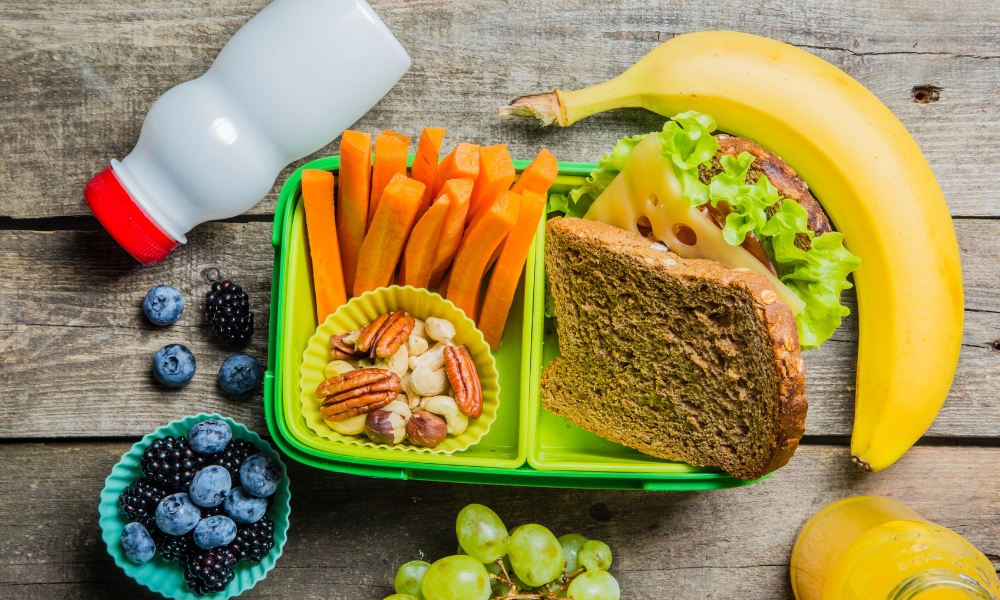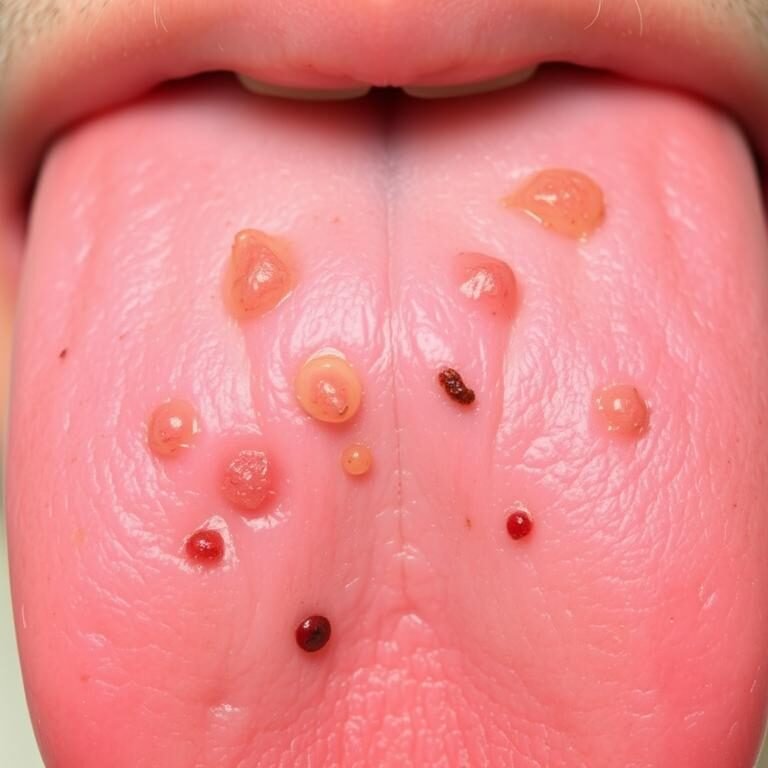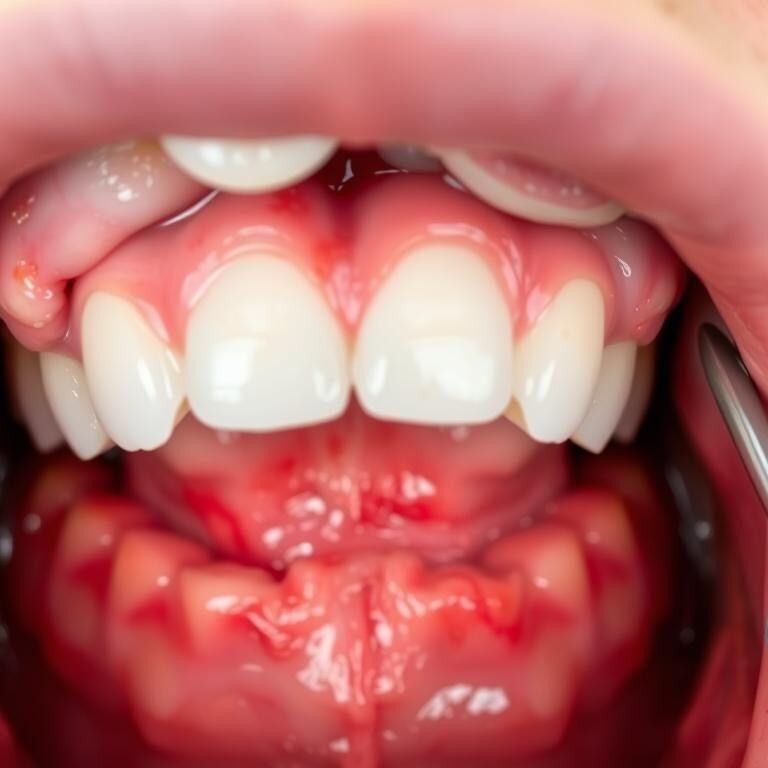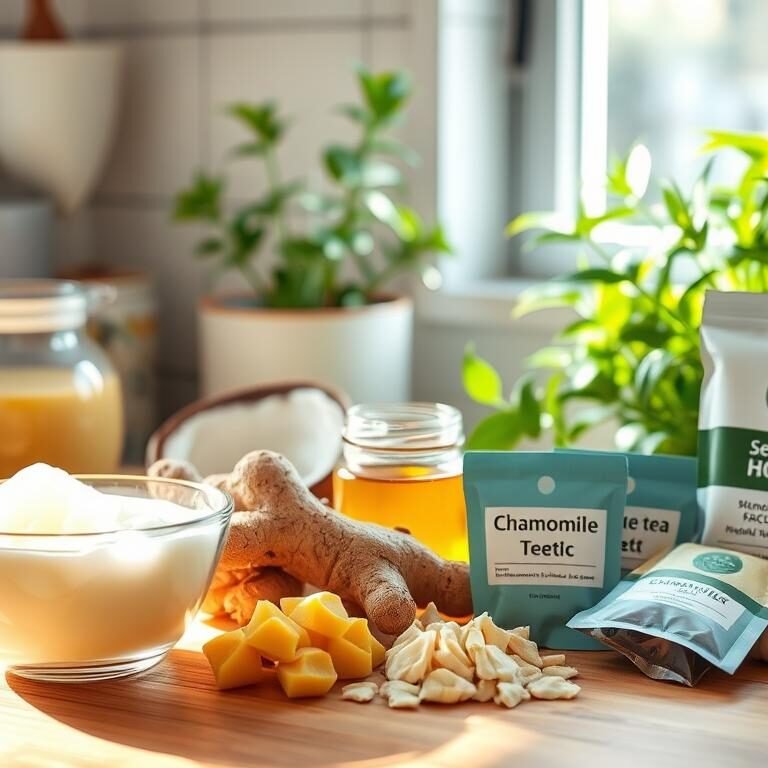Table of Contents
Importance of a Mouth-Healthy Lunch
A mouth-healthy lunch is not just important for overall nutrition, but it also plays a significant role in maintaining good oral health. The food choices we make during our meals can impact the health of our teeth and gums in various ways. From preventing tooth decay to promoting healthy gums, a well-balanced and mouth-friendly lunch can contribute to a lifetime of optimal dental health.
One of the primary reasons why a mouth-healthy lunch is crucial is its role in preventing tooth decay. Foods that are high in sugar and starch can fuel the growth of bacteria in our mouths, leading to the production of acids that harm our teeth. By choosing nutritious foods and minimizing the intake of sugary treats and snacks, we can significantly reduce the risk of cavities and maintain a healthy smile. Additionally, including foods that stimulate saliva production, such as crunchy fruits and vegetables, can help rinse away food particles and neutralize acids, further protecting our teeth from decay.

Choosing Nutritious Foods
Making nutritious food choices is key to promoting dental health, particularly during lunchtime. When planning a mouth-healthy lunch, it is important to focus on selecting foods that are not only satisfying and delicious but also beneficial for our teeth and overall well-being.
Including a variety of fruits and vegetables in your lunch can provide a multitude of benefits for your oral health. These foods are naturally high in essential vitamins and minerals that help strengthen teeth and gums. Additionally, their fiber-rich nature can stimulate saliva production, which plays a vital role in neutralizing acids and preventing tooth decay.
Opting for whole grains as part of your lunch options is another wise choice. Whole grains, such as whole wheat bread and brown rice, are loaded with nutrients and fiber that can enhance your dental health. Not only do they promote a healthy digestive system, but they also require more chewing, which stimulates saliva production and helps clean the teeth. By choosing whole grains over refined grains, you can provide your body with essential nutrients without compromising your dental health.
Making informed choices when it comes to our lunch options is crucial for maintaining good oral health. By including a variety of fruits and vegetables, opting for whole grains, and being mindful of our food choices, we can take significant steps towards ensuring a mouth-healthy lunch.
Including a Variety of Fruits and Vegetables
A well-balanced lunch should always include a variety of fruits and vegetables. These essential food groups provide a wide range of vitamins, minerals, and fiber that are vital for maintaining a healthy mouth and overall well-being. Fruits and vegetables not only contribute to a well-rounded diet, but they also offer specific benefits for dental health.
Including a colorful assortment of fruits and vegetables in your child’s lunchbox can help promote oral health in several ways. Firstly, their high water content helps to hydrate the mouth and stimulate saliva production, which plays a crucial role in neutralizing acids and protecting tooth enamel. Additionally, fruits and vegetables that require a lot of chewing, such as crunchy apples or raw carrots, can help stimulate the gums and promote healthy blood circulation in the oral tissues. The act of chewing also increases saliva flow, further aiding in the natural cleansing and remineralization of teeth. Lastly, many fruits and vegetables contain essential nutrients like vitamin C, which supports healthy gums and helps prevent gum disease.
By including a variety of fruits and vegetables in your child’s lunch, you are not only providing them with necessary vitamins and minerals but also taking proactive steps towards their dental health. Whether it’s packing sliced bell peppers, baby carrots with hummus, or a mixed fruit salad, incorporating these colorful and nutritious options will make lunchtime both tooth-friendly and enjoyable for your little one.
| Category | Fruit | Vegetable |
|---|---|---|
| Citrus | Oranges | Bell Peppers |
| Clementines | Carrots | |
| Grapefruit | Broccoli | |
| Mandarins | Tomatoes | |
| Berries | Strawberries | Cucumber |
| Blueberries | Celery | |
| Raspberries | Snap Peas | |
| Tropical | Pineapple | Baby Spinach |
| Mango | Lettuce | |
| Papaya | Zucchini | |
| Kiwi | Sugar Snap Peas | |
| Stone Fruit | Peaches | Cauliflower |
| Plums | Radishes | |
| Apricots | Sugar Peppers | |
| Nectarines | ||
| Other | Apples | Sugar Beans |
| Bananas | Asparagus | |
| Grapes | Green Beans | |
| Pears | Snow Peas | |
| Cherries |
Opting for Whole Grains
Whole grains are an essential component of a mouth-healthy lunch. Not only do they provide a great source of energy, but they also offer a range of important nutrients that support overall oral health. Whole grains contain fiber, which helps in maintaining a healthy mouth by promoting saliva production and reducing the risk of gum disease. Additionally, they are packed with vitamins and minerals, such as B vitamins, iron, and magnesium, which are beneficial for strong teeth and gums.
When choosing whole grains for your lunch, opt for options like whole wheat bread, whole grain wraps, or brown rice. These choices are less processed and retain more of their natural nutrients compared to their refined counterparts. Remember to read food labels carefully and look for key phrases like “100% whole grain” or “whole wheat flour” to ensure you are selecting the healthiest options. By incorporating whole grains into your lunch, you are taking an important step towards maintaining optimal oral health.
Selecting Lean Proteins
Lean proteins are an essential component of a mouth-healthy lunch. Incorporating lean protein options into your lunch can provide the necessary nutrients for oral health while satisfying your appetite. Lean proteins, such as skinless poultry, fish, legumes, and tofu, are low in saturated fat and can help support gum health and the development of strong teeth.
Including a variety of lean proteins in your lunch can offer numerous benefits. For example, consuming fish rich in omega-3 fatty acids, such as salmon or tuna, can help reduce inflammation in the mouth and promote gum tissue health. Legumes, like lentils or chickpeas, are a great plant-based source of protein that also contain important minerals like calcium and phosphorus, which are vital for dental health.
By selecting lean proteins in your lunch, you not only support your overall health but also contribute to maintaining a healthy smile. Remember to choose lean protein options wisely and incorporate them into well-balanced meals for optimal oral health.
Avoiding Sugary and Acidic Foods
Sugar and acidic foods have long been recognized as major culprits in causing tooth decay and cavities. When consumed in excess, these types of food not only damage the enamel of the teeth but also provide a breeding ground for harmful bacteria in the mouth. It is important to be aware of the hidden sources of sugar such as soft drinks, juices, candies, and even some seemingly healthy snacks. Acidic foods, on the other hand, can erode the enamel and weaken the teeth, making them more susceptible to decay. It is crucial to limit the consumption of sugary and acidic foods in order to maintain optimal oral health.
One key strategy for avoiding sugary and acidic foods is to be mindful of food labels and ingredient lists. Many packaged foods contain added sugars and acids, even when they are not overtly sweet or sour. Taking the time to read and understand labels can help you make informed choices and identify hidden sources of sugar and acid. Additionally, opting for fresh, whole foods like fruits, vegetables, and whole grains can significantly reduce your intake of sugars and acids. By choosing whole foods, you not only provide your body with essential nutrients but also minimize the harmful effects on your teeth.
Incorporating Dairy Products
Dairy products are a valuable addition to a mouth-healthy lunch. Milk, cheese, and yogurt are excellent sources of calcium, which is an essential mineral for promoting strong teeth and bones. In fact, about 99% of the body’s calcium is stored in the teeth and bones, highlighting the important role it plays in maintaining oral health.
Calcium not only strengthens enamel but also helps to neutralize acids in the mouth, which can erode tooth enamel and lead to decay. In addition, dairy products contain casein, a protein that helps to protect tooth enamel by forming a protective layer and reducing the risk of cavities.
It is important to choose low-fat or fat-free options when incorporating dairy products into your child’s lunch, as they provide the same benefits without adding unnecessary saturated fat to their diet. Offering a variety of dairy products, such as a serving of milk or yogurt, and adding cheese to sandwiches or wraps, can ensure that your child gets a healthy dose of calcium while enjoying a delicious and mouth-healthy lunch.
Including Water as the Primary Beverage
Water is not only essential for overall health, but it plays a crucial role in maintaining good oral health as well. As a dentist, I cannot stress enough the importance of including water as the primary beverage in your child’s lunch. Not only does water help to keep the body hydrated, but it also helps to wash away bacteria and food particles from the mouth, reducing the risk of tooth decay and gum disease.
Unlike sugary drinks such as soda, juice, and sports drinks, water does not contain added sugars that can lead to dental problems. Furthermore, water doesn’t contain any acids that can erode tooth enamel, unlike acidic beverages like coffee or citrus juices. By making water the main beverage in your child’s lunch, you are not only promoting their overall health, but you are also protecting their teeth and gums from potential damage.
Encouraging your child to drink water throughout the day can be as simple as packing a reusable water bottle in their lunchbox. You can also involve them in the process by letting them choose a fun and colorful water bottle that they will be excited to use. Additionally, remind your child about the importance of drinking water during lunchtime and emphasize the positive effects it has on their oral health. By promoting water as the primary beverage, you are setting a healthy habit that will benefit your child’s smile for years to come.
Packing Homemade Sandwiches and Wraps
Packing homemade sandwiches and wraps can be a great way to ensure a mouth-healthy lunch for you and your family. By preparing these meals at home, you have complete control over the ingredients, allowing you to make choices that promote dental health.
When constructing your sandwiches and wraps, it is important to focus on nutritious fillings. Opt for lean proteins, such as grilled chicken or turkey, as they provide essential amino acids for tooth development and repair. Including a variety of fruits and vegetables adds not only flavor but also valuable vitamins and minerals that support overall oral health. Crunchy vegetables like carrots and cucumbers can even help clean the teeth as you eat. Additionally, selecting whole grain breads and wraps over refined ones can provide additional fiber, promoting good digestion and reducing the risk of tooth decay.
In conclusion, packing homemade sandwiches and wraps can be a delicious and convenient way to ensure a mouth-healthy lunch. By choosing nutritious ingredients and incorporating a variety of fruits and vegetables, you can promote dental health while satisfying your taste buds. Remember, the choices you make for your lunch can have a lasting impact on your oral health, so make them count!

Using Healthy Condiments and Spreads
When it comes to lunchtime, many people focus on the main dish and neglect the importance of choosing healthy condiments and spreads. However, these seemingly small additions to your meal can have a big impact on your dental health. Opting for healthy condiments and spreads not only enhances the taste of your lunch, but it also promotes good oral hygiene.
One key tip for using healthy condiments and spreads is to choose options that are low in sugar and acid. Sugary condiments, such as ketchup and barbecue sauce, can contribute to tooth decay if consumed in excess. Acidic condiments, like vinaigrettes and hot sauces, can erode tooth enamel over time. To protect your teeth, consider healthier alternatives such as mustard, hummus, or avocado spread. These options not only add flavor to your lunch, but they are also less damaging to your dental health.
Another important aspect to consider is portion control. While adding a generous amount of condiments and spreads may seem enticing, it’s essential to keep in mind that excessive consumption can lead to dental problems. Use condiments and spreads in moderation and be mindful of the quantity you apply to your sandwich or wrap.
Making conscious choices when it comes to condiments and spreads can go a long way in maintaining a mouth-healthy lunch. By opting for low-sugar and low-acid options, as well as practicing portion control, you can enjoy a delicious and tooth-friendly midday meal. Stay tuned for more tips on how to make your lunch both nutritious and beneficial for your dental health.
Including Snacks that Promote Dental Health
When it comes to promoting dental health, it’s important to not only choose snacks that are tasty, but ones that are beneficial for our teeth as well. By selecting snacks that promote dental health, we can help protect our teeth from decay and maintain a bright, healthy smile.
One great option for a dental-friendly snack is crunchy fruits and vegetables. Foods like apples, carrots, and celery require more chewing, which stimulates saliva production. Saliva helps to neutralize acids in the mouth and wash away harmful bacteria. Additionally, the fibrous texture of these foods can help scrub away plaque and food particles, keeping our teeth clean and fresh.
Including snacks like cheese and yogurt in our lunch can also benefit our dental health. These dairy products are not only rich in calcium, which helps to strengthen our teeth, but they also contain casein, a protein that forms a protective layer on the tooth enamel, reducing the risk of tooth decay. Snacking on cheese or enjoying a yogurt cup not only satisfies our taste buds but also contributes to our overall dental well-being.

Preparing Lunches in Advance
Preparing lunches in advance is a practical and time-saving strategy that can help ensure a mouth-healthy meal for your child. By planning and preparing meals ahead of time, you can have greater control over the ingredients and portion sizes, promoting better dental health.
One of the key advantages of preparing lunches in advance is that you can incorporate a wider variety of nutritious foods. By taking the time to plan out meals, you can include a balance of fruits, vegetables, whole grains, and lean proteins, which are all essential for maintaining healthy teeth and gums. Additionally, you can minimize the inclusion of sugary and acidic foods, which can contribute to tooth decay and erosion.
By embracing the practice of preparing lunches in advance, you can effectively prioritize your child’s oral health while providing them with tasty and satisfying meals.
Ensuring Proper Food Storage and Temperature Control
Proper food storage and temperature control are crucial when it comes to maintaining the quality and safety of your lunch. By ensuring that your meals are stored correctly and kept at the appropriate temperatures, you can prevent the growth of harmful bacteria and preserve the nutritional value of your food.
When packing your lunch, it is important to use insulated containers or coolers to keep perishable foods, such as meats, dairy products, and salads, at a safe temperature. Cold foods should be stored at 40°F (4°C) or below to prevent bacterial growth, while hot foods should be kept at 140°F (60°C) or above to avoid the risk of foodborne illnesses.
In addition to proper storage, it is important to consider the duration for which your lunch will be kept. Ideally, perishable foods should be consumed within two hours of preparation to minimize the risk of bacterial contamination. If you need to store your lunch for a longer period, it is recommended to use an insulated lunch bag with ice packs or other cooling methods to maintain the proper temperature.
By paying attention to these food storage and temperature control practices, you can ensure that your lunch remains fresh, nutritious, and safe to eat. Making these simple adjustments to your lunch routine can go a long way in promoting both your dental health and overall well-being.
Encouraging Good Eating Habits at School
Encouraging good eating habits at school is crucial for promoting overall health, including dental health. As a dentist who specializes in pediatric dentistry, I have seen firsthand the impact of poor dietary choices on children’s oral health. By incorporating simple strategies, parents and educators can play a significant role in fostering healthy eating habits among school-age children.
One effective approach is to educate children about the importance of nutritious foods and their impact on oral health. By teaching them about the connection between a balanced diet and strong teeth, we can empower them to make healthier food choices. This can be done through interactive activities, such as games, workshops, or discussions, that highlight the benefits of fruits, vegetables, whole grains, and lean proteins for maintaining a healthy smile. For example, explaining how vitamin C-rich fruits help in gum health or how calcium in dairy products promotes strong teeth can engage children and motivate them to choose tooth-friendly food options.
Additionally, it is essential to create a positive and supportive eating environment at school. This includes offering a variety of healthy food options in the lunch menu, organizing taste tests or cooking demonstrations to introduce new flavors, and involving children in the meal planning process. By involving them in decision-making, we foster a sense of ownership and encourage them to select healthier foods. Creating visually appealing displays of fruits and vegetables in the cafeteria can also make them more enticing and encourage children to give them a try. When children see their peers making nutritious choices, it can positively influence their own eating habits.
| Strategy | Description |
|---|---|
| Balanced Menu Options | Offer a variety of nutritious foods including fruits, vegetables, whole grains, lean proteins, and low-fat dairy products. |
| Nutritional Education | Incorporate nutrition education into the curriculum to teach students about healthy food choices, portion sizes, and the importance of balanced diets. |
| Promoting Hydration | Encourage students to drink water throughout the day by providing access to clean water sources and promoting the benefits of hydration. |
| Cooking Classes | Organize cooking classes or workshops where students can learn basic cooking skills and prepare healthy meals using fresh ingredients. |
| Farm-to-School Programs | Partner with local farms to bring fresh produce to the school cafeteria, educating students about where their food comes from and promoting local agriculture. |
| School Gardens | Establish school gardens where students can participate in growing fruits, vegetables, and herbs, fostering a connection to healthy eating and nature. |
| Physical Activity | Promote physical activity as part of a healthy lifestyle, encouraging students to engage in regular exercise and emphasizing the link between diet and fitness. |
| Healthy Snack Options | Offer nutritious snack options such as fresh fruit, yogurt, nuts, and whole-grain crackers in vending machines and snack bars. |
| Role Modeling | Staff and faculty should serve as positive role models by choosing healthy foods and behaviors during school meals and activities. |
| Family Involvement | Engage families by providing resources and information on healthy eating habits and involving them in school nutrition initiatives and events. |
| Peer Support | Foster a supportive environment where students encourage each other to make healthy food choices and adopt positive eating habits. |
Monitoring and Limiting Junk Food Consumption
Monitoring and limiting junk food consumption is crucial for maintaining good oral health. Junk food, such as sugary snacks and beverages, can lead to an increased risk of tooth decay and gum disease. When consumed regularly, these unhealthy food choices can wreak havoc on dental health, causing cavities and enamel erosion. As a dentist, I often educate my patients on the importance of being mindful of their dietary choices and the potential consequences of excessive junk food consumption.
It is essential for parents and guardians to take an active role in monitoring their children’s junk food intake. One effective strategy is to create a balanced and nutritious meal plan that limits the availability of unhealthy snacks. Encouraging children to opt for healthier alternatives, such as fruits and vegetables, can help establish lifelong healthy eating habits. Additionally, setting a positive example by making nutritious food choices ourselves can significantly influence our children’s dietary preferences. By monitoring and limiting junk food consumption, we can promote optimal oral health and overall well-being in our children.
Partnering with Your Child’s School for Dental Health Awareness
Partnering with your child’s school for dental health awareness is crucial in ensuring that your child receives the necessary education and support for maintaining good oral hygiene. By collaborating with educators, administrators, and other parents, we can create a dental-friendly environment that promotes the overall well-being of our children.
One way to forge this partnership is by organizing dental health awareness programs within the school. These programs can include informative presentations by dental professionals, interactive activities to engage students, and the distribution of educational materials to parents. By equipping students and parents with the knowledge and tools they need, we can empower them to make informed decisions about their oral health and encourage healthy habits that will last a lifetime.
Furthermore, it is imperative to advocate for healthier food choices in school cafeterias. By working with the school administration, we can encourage the inclusion of nutritious options such as fresh fruits and vegetables, whole grains, and lean proteins. Additionally, we can raise awareness about the harmful effects of sugary and acidic foods, and emphasize the importance of limiting their consumption.
By partnering with your child’s school for dental health awareness, we can create an environment that prioritizes oral health and promotes healthy habits that will benefit our children for years to come.
How can I encourage my child to eat a mouth-healthy lunch at school?
You can encourage your child to eat a mouth-healthy lunch at school by involving them in the lunch preparation process and explaining the importance of dental health. You can also pack colorful and appealing lunch options that include a variety of fruits, vegetables, whole grains, lean proteins, and dairy products.
Are there any specific snacks that promote dental health?
Yes, there are several snacks that promote dental health. Some examples include cheese, yogurt, raw fruits and vegetables, nuts, and sugar-free gum. These snacks can help stimulate saliva production and protect against tooth decay.
How can I ensure proper food storage and temperature control for my child’s lunch?
To ensure proper food storage and temperature control, use insulated lunch bags or boxes with ice packs to keep perishable items cool. It is also a good idea to pack lunches in containers with secure lids to prevent leaks and spills.
How can I monitor and limit my child’s junk food consumption at school?
You can monitor and limit your child’s junk food consumption at school by having open conversations about healthy eating habits and explaining the potential negative effects of excessive junk food consumption. Encourage your child to make healthier choices and provide alternatives to junk food snacks.
How can I partner with my child’s school for dental health awareness?
You can partner with your child’s school for dental health awareness by volunteering to give presentations or workshops on oral hygiene, offering to organize dental health campaigns or events, and collaborating with teachers and administrators to incorporate dental health education into the school curriculum.











